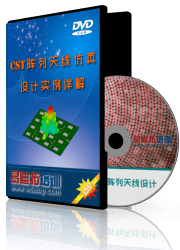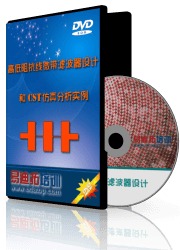- 易迪拓培训,专注于微波、射频、天线设计工程师的培养
CST2013: Special Mesh Properties - Advanced
 Simulation: Mesh
Simulation: Mesh  Global Properties [Specials...]
Global Properties [Specials...]  Advanced
Advanced
Convert geometry data after meshing
Prepare geometry data for accurate post processing at the end of the matrix setup.
Use singularity model for PEC and lossy metal edges
Activates the corner correction for PEC edges based on analytical models.
Material based refinement
None: No mesh material based mesh refinement
Wavelength refinement: Dielectric and permeable materials influence the wavelength of the electromagnetic fields. With this setting, the mesh density for the affected structures will be adjusted according to this effect.
Low frequency refinement: The mesh density is set depending on the material parameters. Higher permittivity or permeability leads to moderately finer meshes. In this case, an unnecessary fine mesh can be avoided by choosing this option.
Consider surrounding space for lower mesh limit
If the check button is activated then the whole bounding box is considered for the lower mesh limit, otherwise only the structure bounding box is considered.
|
|
Enabled | Disabled |
Ratio limit governs local mesh refinement
If this check button is enabled then the local mesh refinement settings are constrained by the ratio limit. In contrast by deactivating this button the local mesh refinement settings are accepted regardless the ratio limit (for more information about the ratio limit see Mesh Properties (Hexahedral) ).
Use TST cells
Activates Thin Sheet Technology (TST) cells.
Always exclude PEC regions
This check button offers the possibility to automatically exclude regions, which are completely filled with PEC, from the transient solver simulation. If large PEC regions exist, selecting this option may result in a significant speed-up of the simulation.
Gap representation tolerance
If this check button is enabled then the accuracy of the internal representation of non-metal gaps is increased. This accuracy enhancement applies only to those locations in the mesh where the size of the mesh cell is large compared to the size of the gap.
A tolerance value might be specified to skip the accuracy enhancement for gaps that are smaller than a certain value. This tolerance value is given in spatial dimensions with respect to the globally defined units.
If gaps cannot be represented with a sufficient accuracy the respective mesh cells are marked with a purple frame within the mesh view.
Parallelization frame
Parts of the matrix calculation process take advantage of running multiple sub-processes in parallel. The dropdown list in this frame allows to control the parallelization behavior.
Choose one of the following three options:
Maximum: Automatically uses the maximum possible number of parallel threads regarding the license and hardware configuration of your computer.
Use up to: Enter here the desired number of threads to use. The entered value will not exceed the maximum.
None: Disables the parallelization.
Please note: Parallelization works only in combination with FPBA.
PBA fill limit
This setting refers to a percentage of how much a mesh area is filled with PEC. Every mesh area that is filled with more than this percentage will be treated as fully filled.
The reason for this setting is that mesh areas with very small non PEC parts may cause instabilities in the simulation. But, for very few examples, the simulation may become instable for the default value of 99%. In these cases try to decrease this value to get a stable simulation.
Point accuracy enhancement
Defines the accuracy level for the internally used geometric data representation. Use the default level of 0% for a fast and accurate matrix setup. If you encounter problems during the meshing process, increase this level. An accuracy of 100% means using the highest possible accuracy of the build-in CAD kernel, but slows down the matrix generation.
Defaults
Resets all settings to the default values.
OK
Accepts the input and closes the dialog.
Cancel
Closes this dialog box without performing any further action.
Help
Shows this help text.
See Also
Mesh View, Mesh Properties, Special Mesh Properties
CST微波工作室培训课程套装,专家讲解,视频教学,帮助您快速学习掌握CST设计应用
上一篇:CST2013: Which Solver To Use
下一篇:CST2013: S-Parameter Overview
CST中文视频培训教程 | More...
 最全面、最专业的CST微波工作室视频培训课程,可以帮助您从零开始,全面系统学习CST的设计应用【More..】
最全面、最专业的CST微波工作室视频培训课程,可以帮助您从零开始,全面系统学习CST的设计应用【More..】
频道总排行
- CST2013: Mesh Problem Handling
- CST2013: Field Source Overview
- CST2013: Discrete Port Overview
- CST2013: Sources and Boundary C
- CST2013: Multipin Port Overview
- CST2013: Farfield Overview
- CST2013: Waveguide Port
- CST2013: Frequency Domain Solver
- CST2013: Import ODB++ Files
- CST2013: Settings for Floquet B











 沪公网安备 31011202014168号
沪公网安备 31011202014168号
 1427313829
1427313829 旺旺在线
旺旺在线 Skype Online
Skype Online 13761612886
13761612886 官方淘宝店
官方淘宝店
